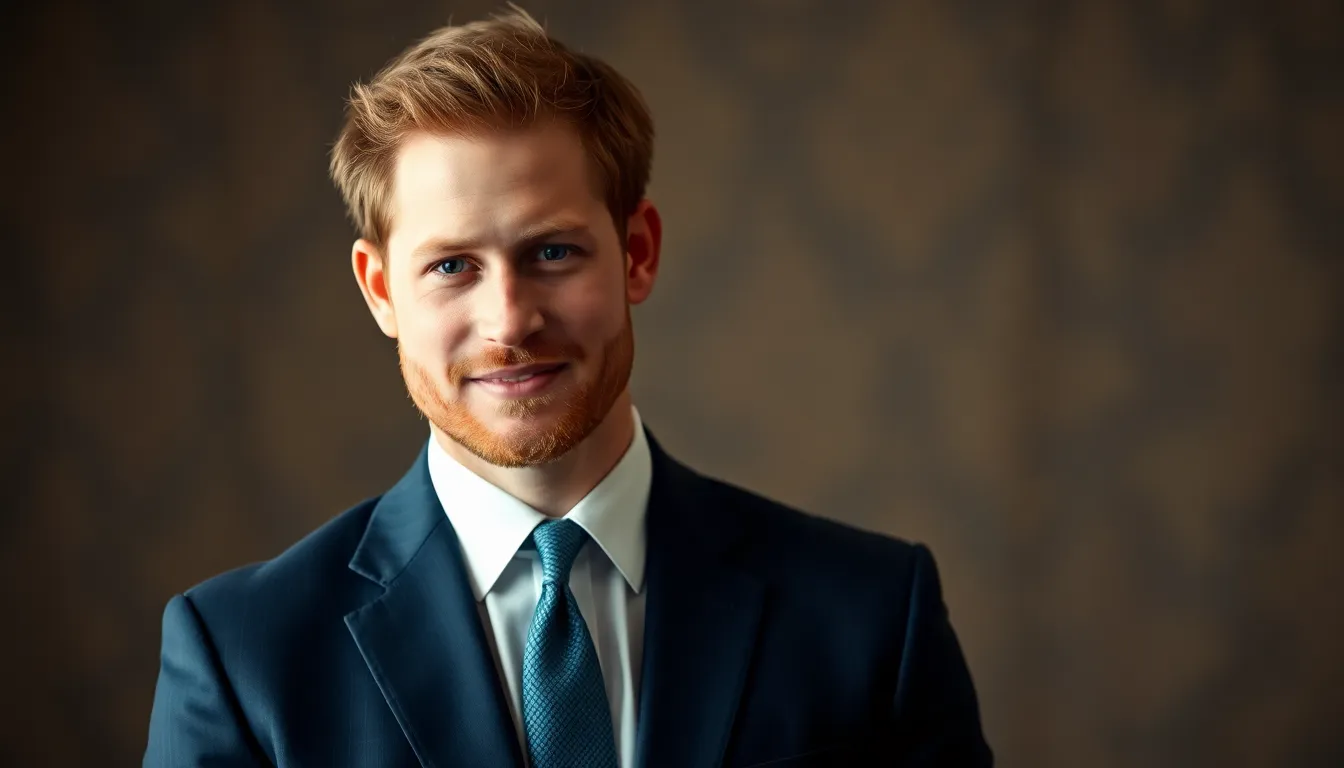When it comes to royalty, names carry weight and history. Prince Harry, known for his charm and charisma, often leaves people wondering: what’s his last name? It’s a question that might seem simple, but it opens the door to a world of royal intrigue.
Table of Contents
ToggleUnderstanding Prince Harry’s Identity
Prince Harry’s full name is Henry Charles Albert David. Despite being known as Prince Harry, he carries the title of Duke of Sussex. Royal names often evoke curiosity, especially regarding last names. Windsor serves as the family name for the British royal family.
In some contexts, he may refer to himself simply as Harry Wales, drawing from his military title of Captain Harry Wales. His close association with the name represents both his personal and royal heritage. Understanding this duality illuminates the blending of modernity and tradition within the monarchy.
Royal traditions shape the way members of the family present their identities. For instance, many royals use specific titles based on lineage and circumstance. In Harry’s case, his mother, Princess Diana, significantly influenced his public persona. The way he interacts with the public reflects his commitment to honoring her legacy.
Additionally, Prince Harry’s identity has evolved post-royalty. He and Meghan Markle, the Duchess of Sussex, have carved out their path, focusing on philanthropic efforts and mental health awareness. This shift in identity demonstrates the complexities of modern royal life amid longstanding traditions. The name connotations carry weight in the royal narrative, influencing public perception and media narratives.
Maintaining an understanding of Prince Harry’s identity enhances awareness of royal dynamics and the significance of names within this context. Exploring the implications of his name offers insight into his personal journey and royal heritage.
The Significance of Last Names

Last names hold immense importance within royal circles, reflecting heritage and identity. Understanding their significance sheds light on the intricacies of royal traditions and history.
Historical Context of Royal Last Names
Royal last names often associate with lineage and legacy. Historically, the British royal family adopted the name Windsor during World War I to distance themselves from their German roots. Names such as Tudor or Stuart evoke distinct historical eras, showcasing connections to significant events. They encapsulate royal narratives shaped by monarchy and governance. Connections to ancestry weave through royal titles, often reflecting a deep sense of pride and responsibility.
Modern Implications of Last Names in the Royal Family
Last names in today’s royal family carry considerable weight in public perception. They affect how royals engage with common citizens and influence their societal roles. For instance, Prince Harry’s title as Duke of Sussex enhances his public image while maintaining royal traditions. Moreover, the use of familial names illustrates the blend of personal branding and royal heritage. As royals navigate the modern world, their last names symbolize both tradition and evolution, offering insight into their shifting identities.
What Is Prince Harry’s Last Name?
Prince Harry’s last name raises questions about royal identity and heritage.
The Royal Family Name: Windsor
Windsor serves as the official family name of the British royal family. This name replaced the House of Saxe-Coburg and Gotha during World War I, a decision aimed at distancing from German roots. It embodies the monarchy’s historical narrative and signifies their connection to British heritage. Members of the royal family predominantly use Windsor during formal occasions. In various contexts, however, the public focuses more on individual titles rather than surnames, adding layers of complexity to royal recognition. Prince Harry’s association with the name Windsor underscores his royal lineage and the traditions that accompany it, shaping his identity within the family.
The Personal Name: Mountbatten-Windsor
Mountbatten-Windsor represents a more personal family name used by Harry and other descendants of Queen Elizabeth II. This name honors Prince Philip’s family, the House of Mountbatten. In personal and private matters, Harry may prefer Mountbatten-Windsor, signaling a blend of both sides of his heritage. This surname highlights the evolving nature of royal identities, especially in the modern context. When Harry’s children are addressed, they often use this surname, establishing a connection to their paternal lineage while maintaining royal ties. By identifying with Mountbatten-Windsor, the family illustrates a commitment to both tradition and personal significance.
Public Perception and Media Usage
Public perception of Prince Harry’s name reflects a blend of curiosity and respect for royal tradition. While he is often simply referred to as Prince Harry, many recognize his formal name, Henry Charles Albert David. The media frequently emphasizes his title, Duke of Sussex, which highlights his royal status alongside his personal identity.
Media usage of last names varies based on context. For instance, some outlets prefer Windsor to signify his royal affiliation, while others adopt Harry Wales, which reflects both his military ties and familial heritage. This variation illustrates how identity can shift within public discourse, often influenced by individual narratives or specific events.
His mother’s legacy resonates deeply within public conversations about him. Princess Diana’s influence in shaping Prince Harry’s approach to philanthropy and mental health awareness continues to draw media attention. The portrayal of his evolving identity post-royalty showcases a dynamic relationship with modern royal life, prompting discussions that contrast historical expectations with contemporary values.
Royal traditions weigh heavily on how the media presents individual family members. Windsor serves as an official surname across royal events, creating a link to British heritage. However, personal choices surrounding family names add layers of complexity, especially with Mountbatten-Windsor coming into play. Harry uses this surname for his children, emphasizing both a connection to their heritage and the adaptive nature of royal identities.
Understanding how the media navigates these nuances offers a richer perspective on Prince Harry’s public image. Last names embody significant historical narratives and personal journeys, shedding light on the intricacies of royal life in today’s society.
Prince Harry’s name is more than just a label; it encapsulates a rich tapestry of royal history and personal identity. The use of surnames like Windsor and Mountbatten-Windsor illustrates the blend of tradition and modernity within the royal family. As he navigates his life outside the royal framework, Harry’s evolving identity reflects both his heritage and his commitment to contemporary values.
The curiosity surrounding his last name reveals a deeper fascination with royal dynamics and the significance of names in shaping public perception. Whether referred to as Prince Harry or Harry Wales, the nuances of his identity continue to resonate, showcasing the complexities of modern royalty.




